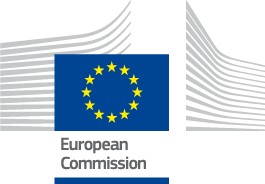

Country Factsheet
Cyprus has three FLAGs, whose main challenges are growing unemployment; an increasing average age of fishermen; insufficient training for the young; excessive recreational fishing and overfishing; and heavy tourist development. To tackle these issues, the focus of CLLD in Cyprus is on creating new sources of income and new jobs; developing sustainable aquaculture; capitalising on opportunities provided by the blue economy; capitalising on the natural assets of the fisheries areas to improve their attractiveness as sustainable tourist destinations; and protecting the marine environment and biodiversity.
Although the contribution of the sector to Gross National Product does not exceed 0.3%, it plays an important socio-economic role in several coastal areas, generating income and jobs within the sector but also indirectly in activities linked to, or dependent on, the sector. However, the fisheries and aquaculture sector - and those communities that depend directly or indirectly on such activities - faces challenges in terms of its biological and economic sustainability.
Contact details of the managing authority can be found here.
More information about national EMFF programmes can be found here.
In the previous programming period, Cyprus had just one FLAG whose local development strategy covered three of the nine fisheries areas described in Cyprus’ Operational Programme. These areas covered the municipalities of Larnaca, Paralimni, and Ayia Napa as well as five Communities of Larnaca and Famagusta (Mari, Zygi, Ormidia, Xylotymbou and Liopetri).
From 2007-2013, the main achievements of Axis 4 in Cyprus included the creation and maintenance of jobs, including outside the fisheries sector; the strengthening of the processing and marketing capacity in the area; enhancing the skills of the local community; and improvements in small-scale infrastructure and in the touristic attractiveness of the area.
The main challenges that Community-Led Local Development will have to address in Cypriot fisheries areas in the coming years are:
To cope with these challenges, the objectives for CLLD in Cyprus for 2014-2020 are to improve the social and economic wellbeing of the fisheries and aquaculture dependent areas, by better exploiting their fisheries and aquaculture products and fostering the creation of new jobs. To this end, the focus will be on:
Since the 2007-2013 period, the total budget for CLLD has been increased from €2M to €7M. Taking into account the increase in number of FLAGs (from one to three), this implies a slightly higher average budget per FLAG (from €2M to €2.3M).
The Cypriot FLAGs are all managing LEADER funds alongside their FLAG budgets. FLAG and LEADER activities and strategies are coordinated, even though each fund has a separate strategy.
For the 2014-2020 period, the Intermediate Body (the Department of Fisheries and Maritime Research) will assume the role of National Fisheries Network which will work alongside the existing Rural National Network, participating in the Coordination Committee of the RNN.
Indicative Tasks of the National Fisheries Network include:
Total budget: The operation of the National Fisheries network will be funded with €100 000 for the programming period by technical assistance from the Cyprus EMFF programme.
Click here for the National Network contact details.
In the 2014-2020 programming period, the 9 fisheries areas defined in Cyprus’ Operational Programme are the same as those in the previous programming period. However, the number of FLAGs has increased from one to three, this time covering all 9 fisheries areas eligible for CLLD funding.
During the EMFF funding period, Cypriot FLAGs proposed both inter-territorial and transnational cooperation project, in particular around pesca-tourism.
For information on how cooperation was programmed and organised in Cyprus, click here.
| Code | Name | Region | Surface area (km²) | Population | Population density (per km²) | Employment in fisheries* |
|---|---|---|---|---|---|---|
| CY201 | Larnaca FLAG | Larnaka |
516 | 120350 | 233 | 962 |
| CY202 | Lemesos FLAG | Limassol |
255 | 113544 | 444 | 63 |
| CY203 | Paphos FLAG | Pafos |
30993 | 60195 | 19422 | 1230 |